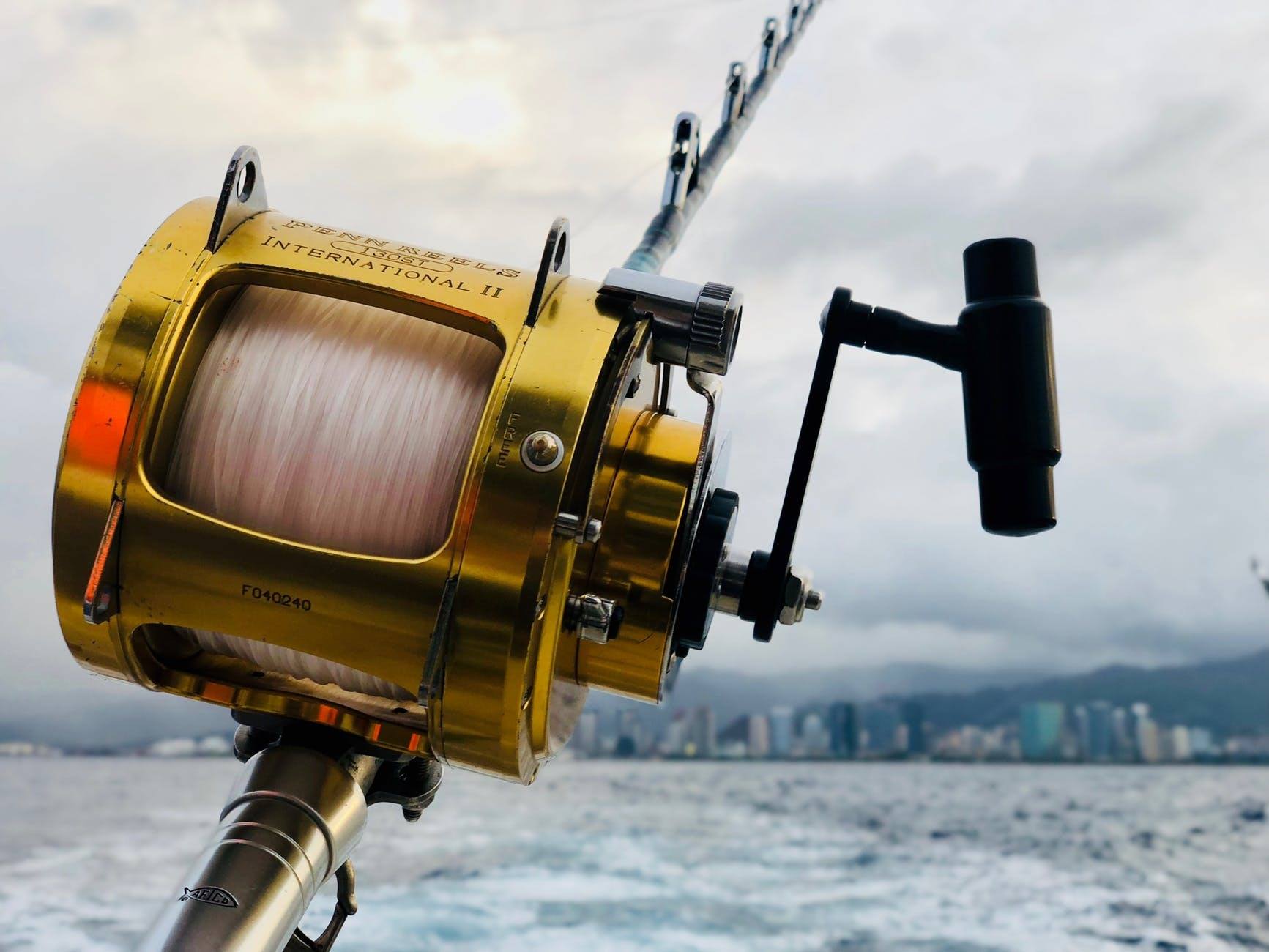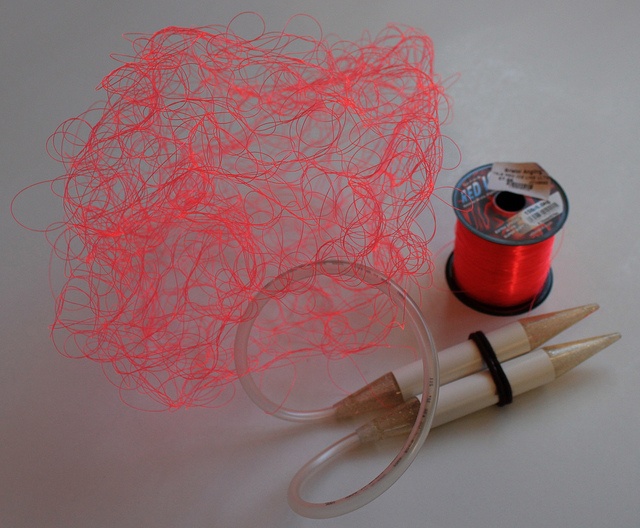Innovation and improvement: two words that seem to go with just about any endeavor involving technical equipment. Gear is always changing and sometimes it can feel like if you don’t have the latest gadget, you’re behind the times. It’s no different in fishing. From advances in electronics to help you find the fish to biodegradable fishing line and lures to help you catch the fish while reducing your carbon footprint, the world of fishing has seen its share of innovation and improvement.
But for over 100 years, conventional spinning gear remains largely unchanged and is the first choice of many light tackle anglers. Spinning tackle provides plenty of advantages over bait-casting rigs, like the ability to throw lighter lures in windy conditions or to skip bait easier under low cover. Just about every serious angler has an assortment of spinning setups in their arsenal. In this article, we’re going to give you a step-by-step tutorial on how to spool a spinning reel.
What Is A Spinning Reel?
Around since the 1870s, they were originally designed to allow the use of artificial flies that were too light to be cast by bait-casting reels. Spinning reels are usually mounted on the underside of the rod. Aided by gravity, this position requires no wrist exertion to keep the reel in the proper position. They work by using a fixed line spool with a safeguard and wire bail design to retrieve the cast line. They are ideal for catching smaller species of fish or for adding to the thrill of catching a larger fish.
How To Use A Spinning Reel
Before we get to how to spool a spinning reel, let’s go over the basics of using one. They’re one of the most user-friendly reels on the market.
1. Get Comfortable
First, find a comfortable balance point for your rod and reel. This is usually achieved by holding the rod with your fingers around the foot of the reel (where it attaches to the rod).
2. Casting Your Line
To cast, hold the line against the rod with your index finger and open the bail with your other hand. Point the rod at the target and, using your wrist and elbow, bring the rod back just past vertical with your body. In one motion, thrust the rod forward releasing the line at about the halfway point (it’s easy but might take a little practice). When your cast is complete, close the bail with your free hand. Our how to spool a spinning reel section gives information on castingthat you’ll want to pay attention to.
3. Retrieving Your Line
Simply use the crank of the reel to pull in the cast line, hopefully with a fish on the hook.
Advantages Of Using A Spinning Reel

Before we show you how to spool a spinning reel, let’s look at some reasons why you might want to make it your go-to reel.
1. Casting Lighter Lures
For lures up to a 1/4-ounce, a spinning reel will allow you to cast the greatest distance. When fishing for panfish or trout, there is no match for a spinning reel. In saltwater flats, casting a 1/8-ounce lure into a hole at 100 feet is a job only a spinning reel can pull off consistently. Even pro bass anglers, who usually prefer bait casters, turn to their spinning rigs when they need to fish with lighter baits.
2. Windy Conditions
If the wind is howling, the advantages of spinning reels is even greater. Backlashes can be a real problem when casting with a bait caster. Casting into the wind is more effective with spinning tackle, especially when using light lures.
3. Skipping Lures Under Low Cover
When fishing around docks, piers, or low hanging limbs, spinning tackle is a better choice than bait-casting gear. It takes many hours of practice to learn to skip baits and avoid backlash when using bait casters but spinning tackle allows beginners to learn this technique quickly.
4. Doesn’t Matter Which Hand You Cast With
A Spinning reel’s handle can be changed from the right and left sides to fit your handedness. This is not possible with bait casters, you must choose which model to purchase ahead of time.
5. Drag Adjustments are Easier
You can adjust your drag during your fight with a fish very easily with a spinning reel. Drags are very accessible and give you full adjustment capabilities while reeling in your catch. On bait-casting reels, adjustments can be made, but the drag switch is next to the handle and trying to make changes while battling a fish is more complicated.
How To Spool A Spinning Reel
Now that we’ve covered what a spinning reel is and how it gives you some real advantages when fishing, it’s time to show you how to spool a spinning reel and maybe get into a little about different types of fishing line.
How to Spool a Spinning Reel With Braided Fishing Line
The most important thing here is using the correct tension of the braid. New fishermen sometimes spool their braid too loosely causing it to digging into itself. To prevent this:
- Use a spooling tool to get your line tight enough on your reel
- Use about 15-20 yards of monofilament line to start to keep the braid from digging into bottom of your reel
Here’s what to do:
- 1Tie monofilament of the same lb-test as the braid you will spooling to your reel and tie off with a uni-knot.
- 2Reel 15-20 yards of monofilament on to your reel and cut it.
- 3Put your braid in your spooling tool.
- 4Attach the spooling tool (by its suction cups) to a smooth surface and set to the proper tension.
- 5Connect the braid to the monofilament line backing with a double uni-knot.
- 6Begin reeling the braid onto the reel.
- 7Continue reeling until the line ends up at the ring of your spool. If you don’t have a ring, use your best judgement
How to Spool a Spinning Reel with Monofilament Fishing Line
Monofilament line tends to keep the form of the spool it’s on. This is called “memory” and it’s not good. When this is allowed to happen, the line develops curls, which shorten casting distance and increase the chances of tangles. To prevent this:
- Always use bulk spools of monofilament to spool the reel
- If you are in a boat, let your line out as you move forward, this will take out most of the twist in the line
Here’s what to do:
- 1Tie the monofilament line to the reel’s spool with a uni-knot.
- 2Place your bulk monofilament spool onto a spooling tool.
- 3Attach the spooling tools to a smooth surface and set to the proper tension.
- 4Reel the monofilament line onto the reel up to the marking on the spool, or until the line is about 1/8-inch from the edge of the spool.
Types of Fishing Line

Here, we’ll explain a little about the three main types of fishing line available to choose from. All are appropriate for use with a spinning reel.
1. Monofilament Line

Monofilament line is cheap and easy to find. “Mono” line is a good all-around line but does have flaws:
- It is thick and is more visible in the water than other lines, meaning a fish might notice your line and avoid your baited hook
- It stretches which can make it difficult to feel a hit from a fish
- It floats which can be good or bad depending on how you’re fishing.
- It also suffers from the “line memory” which can cause tangling in your reel and may affect your casting.
2. Braid Line
Braided line is very strong and hard to nick. It offers some real strengths and a weakness or two:
- It has almost stretch allowing the angler to feel a strike
- It allows for easier lure movement, especially when surface fishing
- Thinner than monofilament line, it is still visible in water
- It does not suffer from “line memory” and will probably increase the distance of your casts
3. Fluorocarbon Line
Relatively new on the fishing scene, it brings some interesting things to the table:
- It has a refractive index close to that of water and is slightly more invisible in water than other lines
- It is dense and sinks quickly
- It does not stretch much at all
- It is susceptible to “line memory”
CONCLUSION
Fishing with a spinning reel is a lot of fun and is a versatile choice for many anglers, especially those new to fishing. It’s easy to maintain and the skills you learn by using a spinning reel will help you catch more fish and enjoy your pastime that much more. We hope the information we’ve provided was helpful. By learning how to spool a spinning reel properly, you‘ll be able to spend more time enjoying your hobby and less time untangling nasty backlashes.